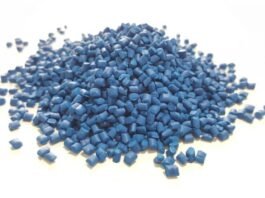Correctly installing a stove or fireplace insert in a pre-prepared place is a task that requires some experience and skill. There are especially many nuances associated with the so-called leaning wall. Here’s what’s important to consider.
What kind of leaning wall is this?
The section of the wall near which the stove or fireplace is located is called the “leaning wall.” As a rule, this section is made of the same materials as the wall itself. White or red brick, wood concrete and aerated concrete blocks, logs – any of these materials, except red brick, are flammable or cannot withstand temperature changes. This means it needs additional protection. For flammable materials this protection must be doubled.
Why protect a brick wall?
If we install a fireplace insert, even the red brick wall needs to be insulated. This material accumulates heat and transfers it further along the wall – sometimes over a distance of more than a meter. Consequently, the structure of the walls will change (especially if the wall is not entirely built of red brick), and the finishing materials in these places will peel off, become deformed and change color.
Pro Tip: For top-notch fireplace installation in San Francisco, CA, look no further. Our skilled team delivers expert service, ensuring your fireplace is installed safely and efficiently, enhancing your home’s warmth and ambiance.
The installation instructions for a factory fireplace or stove must indicate the recommended distances from the combustible / non-combustible wall and the requirements for its insulation. Only some manufacturers have the back wall of the fireplace stove that does not heat up above 40°C, which is noted in the attached documents.
Important : The technological box of the fireplace – it contains the fireplace insert itself and the starting chimney – must be made like a thermos so that heat is transferred only through the glass of the firebox and ventilation grilles. And excess heat was carried away by chimney pipes.
Why protect the wall behind the chimney?
The wall along which the chimney runs must also be insulated. For some reason, this is especially often forgotten when arranging baths. A typical mistake is when the stove is separated from the wall by brickwork, which ends just above the level of the stove, then there is a lining, and a metal chimney runs along it.
For sauna stoves, the temperature of the exhaust gasses can reach 900°C! In order for wood to begin to smolder, it is enough to heat up to a temperature of 130°C for two weeks. The risk of lining fire during such installation is very high.
For fireplace inserts and metal stoves, the temperature of the exhaust gasses is lower – 290 – 350 ° C, but it is also dangerous for wood. Wood dries over time, becomes light, soft and conducts heat better. Combustible materials also include plaster and wallpaper.
Remember
It is no less important to insulate the wall behind the chimney than the wall behind the firebox.
Important
Arbolite, aerated concrete blocks and white brick do not like alternating temperatures – heating / cooling. To be sure that the wall where the chimney passes will retain its structure and quality, and at the same time completely eliminate the possibility of fire, the wall must be protected.
Advice
If the chimney runs in a brick shaft, then the wall on the back side of the shaft will also heat up – even a metal sleeve installed in the shaft will not help. Therefore, it is advisable not to decorate this section of the wall with wallpaper – it may turn yellow and peel off. Ceramic tiles or plaster work better.
What material to choose
Just mounting tiles or a clinker on the wall is not enough. In photographs of completed projects, you see only the “tip of the iceberg”: under a layer of beautiful cladding, the insulation “pie” is usually hidden. If you look closely, you can see the thickness of this “pie”.
Requirements that the insulation material must meet:
- As a rule, this is sheet material with a thickness of at least 30 mm.
- Good insulation does not conduct or absorb heat well. For example, if on one side of the sheet the temperature is 300°C, then on the other it is only 59°C.
- The insulation material does not change characteristics under heating / cooling modes. It does not expand, does not contract, and retains its geometry and properties.
- The insulation is environmentally friendly, and when heated there is absolutely no emissions or evaporation.
Fact
All of the above requirements are met by vermiculite board and calcium silicate – they are most often used to protect walls.
What will NOT work?
- Glass magnesite (SML). It is a good conductor of heat and expands when heated.
- Minerite / fiber cement board. Its operating temperature is not higher than 150°C. At higher temperatures, the cellulose in the board burns out and the minerite crumbles.
- Foil-coated mineral wool. Over time, the foil tends to pull away from the cotton wool. In addition, when heating, a sharp unpleasant odor often arises, which does not stop while the fireplace is operating.
- GVL – it can be used to insulate the wall facing the chimney for the fireplace, but it is not suitable for the construction of the technological box of the fireplace insert. The material can “play” with a sharp temperature change in the range from half to one and a half percent.
Check and remove!
Electrical wires.
If they run along the wall near which the fireplace will be located, they must be cut and moved to another place. This operation will increase construction costs.
Ventilation hole.
There are cases when it is placed next to the chimney shaft and during installation of the fireplace it ends up in the thermal technological box. Working ventilation disrupts the operation of the fireplace, so the hole will have to be tightly sealed and removed somewhere else.
Water supply and sewerage.
Fortunately, situations where they pass through a leaning wall are extremely rare indeed. But if this happens, communications will have to be dismantled.
Stretch ceiling.
Should not be adjacent to the technological box. Warm air, heated to 100 – 150°C, rushes from the fireplace ventilation grilles to the ceiling . It can irreparably damage the suspended ceiling.
Pro Tip: Seeking fireplace installation services in San Rafael, CA? Trust our experienced team to bring warmth and style to your home. With meticulous attention to detail, we ensure a seamless installation process every time.
Instead of a conclusion
Before installing a fireplace, it is necessary to coordinate the work with electricians, ventilation workers, plumbers and finishers. Moreover, it is advisable to carry out approvals at the design stage, providing for maximum non-combustibility of the sections of walls leaning against both the fireplace and the chimney.




